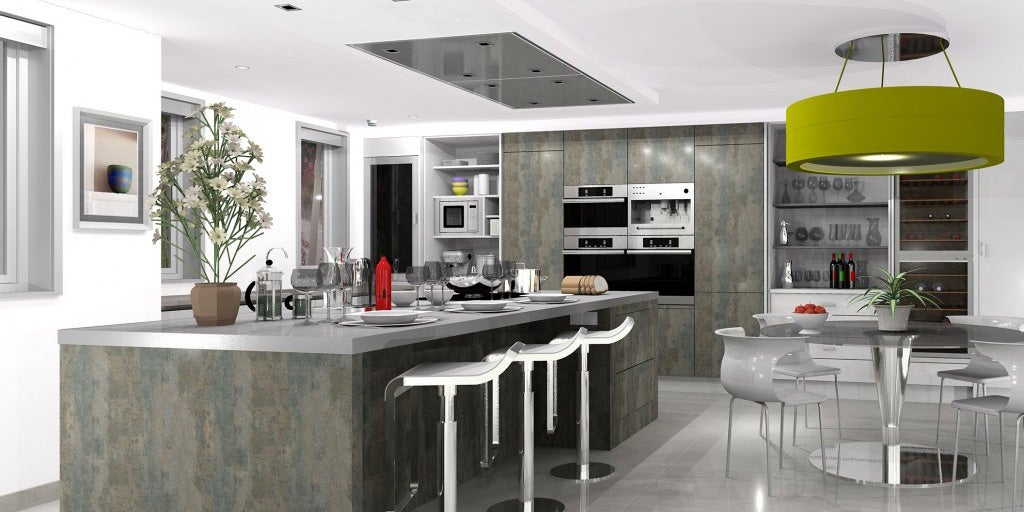There was a time when a new kitchen design was a pretty hit and miss affair. We would look in the local showroom and try to picture how a particular style of cabinet or a flooring color would look in our own home and then make our decision from that standpoint.
However, fortunately kitchen design has moved into the 21st century and there is no longer the need to use our imaginations when it comes to creating our dream kitchen. Technology can now bring a design to life and its influence in helping to design our homes is only going to grow.
Software Advances
Architects and interior designers now rarely create a vision for a building or a room without the use of CAD software. CAD, or computer aided design, can not only render a room three dimensionally but it can offer a multitude of options in terms of fittings, fixtures and colours. It can even help to optimize the design of the room in terms of ergonomics.
The biggest benefit of CAD for consumers is the ease with which you can view your kitchen design, laid out in numerous ways, to see which you prefer. Once this is rendered in 3D it is much easier to see whether for example, the oven and sink are in the easiest places for you to reach when you are preparing food. You can also view many styles of kitchen fittings, fixtures and flooring to see which you prefer and even get a clear image of whether a particular wall will look better plastered or with a stripped back brick effect. The pictures in the gallery on Autokitchen’s website gives you a clear indication of how detailed these rendered images are.
For designers and architects the benefits of using CAD software are also numerous. It means that they can be far more productive, as they can create highly detailed designs which can be amended swiftly if their clients wish to make changes.
It also means that the designs created using software include all the materials which will be used and thus there is a ready-made database of information which can be utilized during the manufacturing process. This can rapidly decrease the time it takes for a kitchen to go from the design stage through to the finished build. This is better for the designer but also for consumers, who often cite that delivery time is one of the biggest influences in their decision making process.
Extending Design to Furniture
Furniture has always had a design element at its heart but this is now also being expanded by the use of technology. Dining table designs such as those featured by BoConcept are sleek, ergonomic and can even be customised to your own needs. A far cry from the days when a consumer needed to fit their life around their furniture as opposed to today when our furniture fits our needs.
The Future of Design
When designers are learning their craft they are now exposed to many more technological advances which help them to gain first-hand knowledge of the use and context of materials in the environment. Furthermore training on various software programs now forms an integral part of any design curriculum.
In addition, the fact that magazines such as In.Design feature articles on advances in technology shows what a huge impact it has had on the industry and how they see that evolving in the future. With advances in digital technology there is also conjecture that personalization, our love of which is illustrated in our mobile apps, will be extended into the realm of our homes. So for example, depending on the time of day or the month of the year, our homes could be set to our own personal preferences in terms of lighting and even window shading. Because designers can now already render our homes in 3D, adding these changes will seem less of a leap than they would have in the days of pencil drawings.
If we look further into the future we might even anticipate holographic design on the horizon but here the line between fact and science fiction becomes more blurred and for now we will have to wait and see what advances occur. However, one thing we can be sure of is that technology will continue to influence the design industry far into the future.




